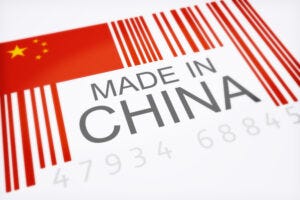Content Spotlight
Podcast: MilliporeSigma says education vital to creating unbreakable chain for sustainability
MilliporeSigma discusses the importance of people, education, and the benefits of embracing discomfort to bolster sustainability efforts.

It is more expensive to make primary proteins in China than in the US as increased internal demand and rising labor costs break the country’s perception of low-cost biomanufacturing, according to BioPlan Associates.
China’s biopharma market has changed rapidly over the past decade, with regulatory reforms and investment driving internal innovation. As such, China has grown into the world’s second largest pharmaceuticals market, says Vicky Qing Xia, project director at BioPlan Associates, as part of the CPHI Annual Report release ahead of the world’s largest pharma event to be held next month in Barcelona, Spain (24-26 October).
But innovation comes at a price, she argues, with manufacturing costs rocketing over the past few years. The average cost per gram for a primary recombinant protein in China, for example, rose from $207 in 2022 to $294 in 2023. In comparison, the cost in the US fell from $291 in 2022 to $255 over the same period.

DepositPhotos/digitalstorm
According to Qing, the rising demand and labor costs in China could be driving the increase. “For example, while government subsidiaries may help Chinese developers to control costs for facilities, wages, which are a major cost in biologics production, will continue to rise in the coming year.
“Another factor is the increased costs may also be due to the rise in the percentage of mAb [monoclonal antibody] therapeutics, which are more expensive to produce among primary recombinant proteins, as these mAbs are getting BLAs [biologics license application] at an accelerated pace.”
Whatever the reason, as costs for consumables increase, and greater wage parity begins to develop, China is no longer the low-cost biomanufacturer it has long been perceived to be by the West, she argues.
“This shifting dynamic may then force Chinese companies to look at alternatives, for example, investing in cutting edge technology or other niche production strategies to differentiate themselves in this ever-growing and highly competitive industry,” she writes.
This shift has already begun, she continues, citing figures from China’s National Medical Products Administration (NMPA). In the past decade, the organization approved 130 innovative drugs but in the first half of 2023 alone, 24 innovative drugs were approved.
Furthermore, applications for IND Class I (innovative) drugs increased by 360% in four years to 944 in 2022, with biologics representing 49% of all applications – up from just 17% in 2017.
To conclude, Qing looked ahead to China’s biopharmaceutical landscape over the next five years. “The industry, having evolved from a low-cost biomanufacturer to a research and development powerhouse, will have successfully carved out a much larger niche for itself in the global market.
“Regulatory reforms, which have already shaped the industry’s trajectory, will continue to influence its direction, prompting domestic developers to pursue mergers, acquisitions, and differentiation strategies to overcome challenges of overcrowding within specific drug classes. This regulatory drive will culminate in a more streamlined and efficient drug development pipeline, marked by a reduced but highly specialized pool of biopharma companies with focused expertise.”
You May Also Like